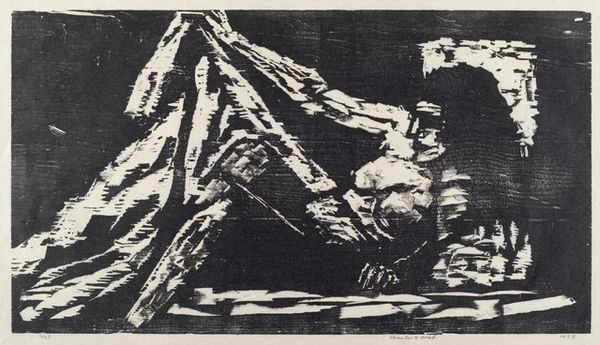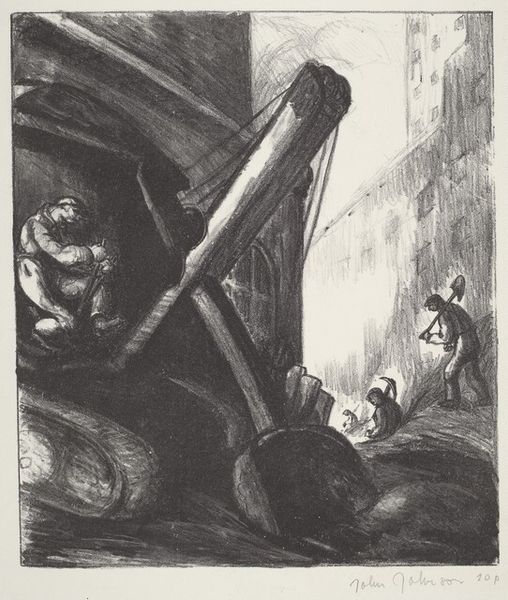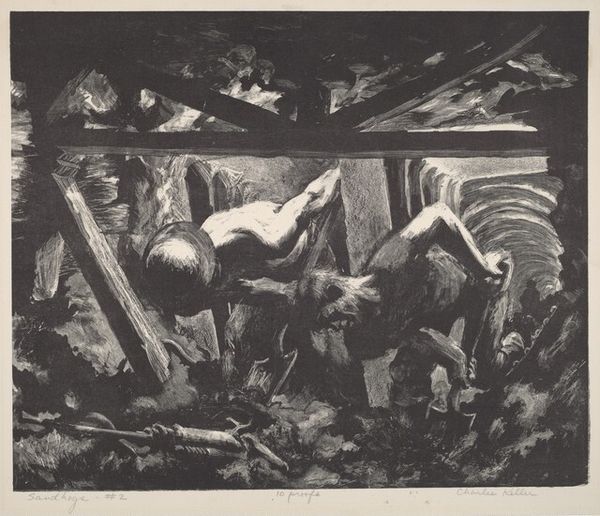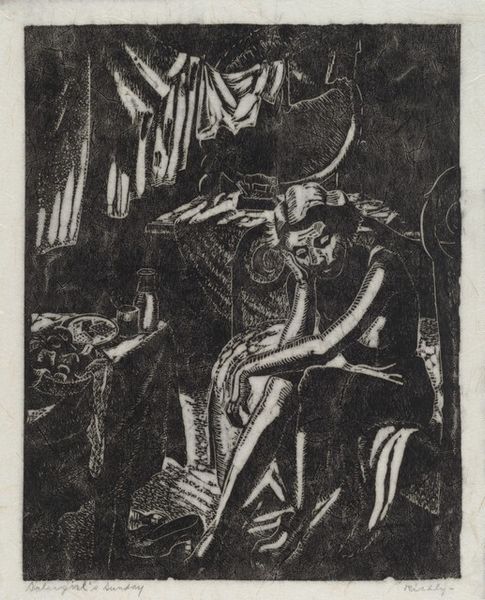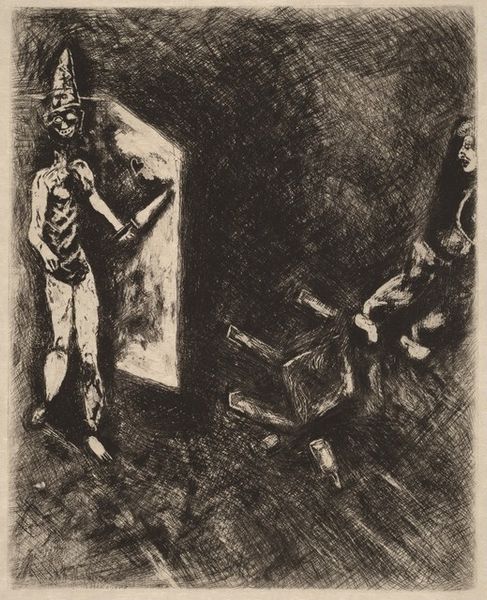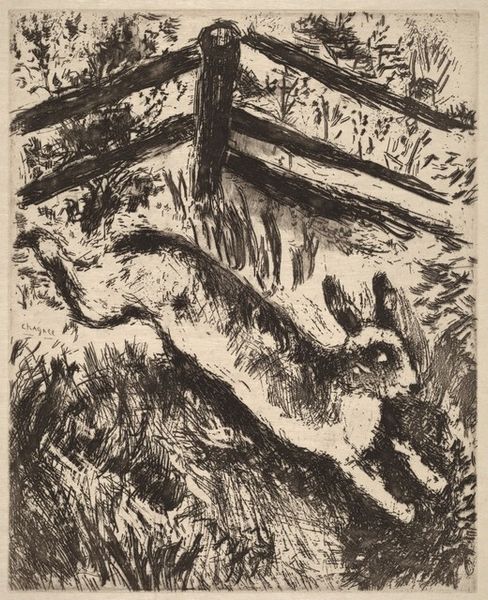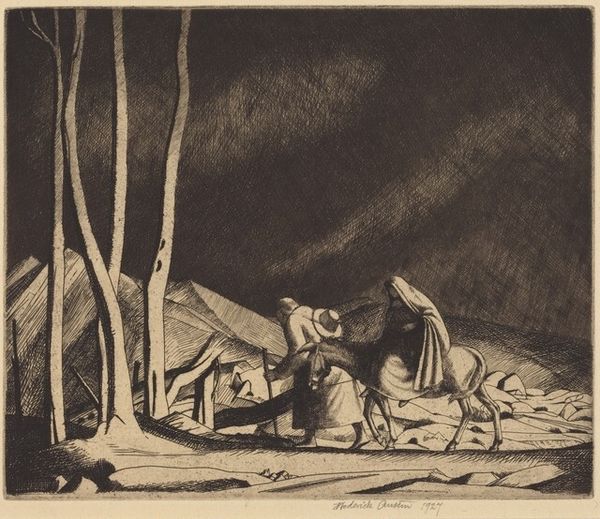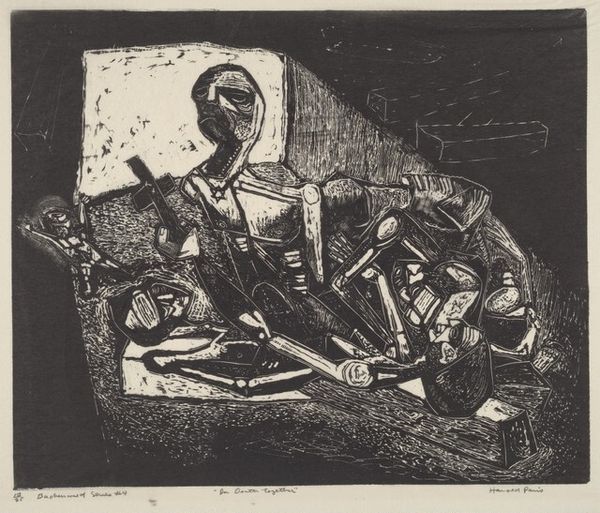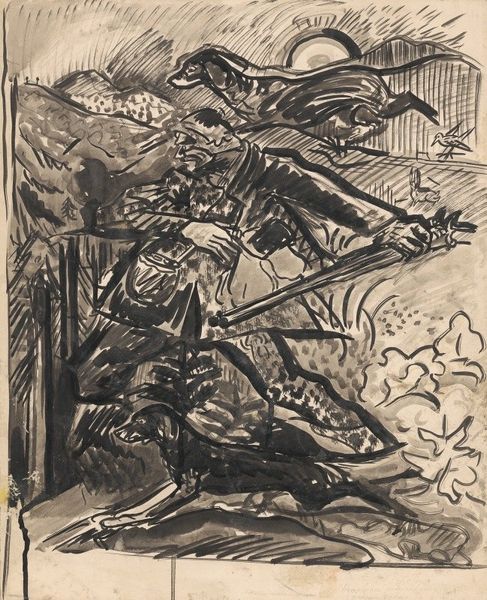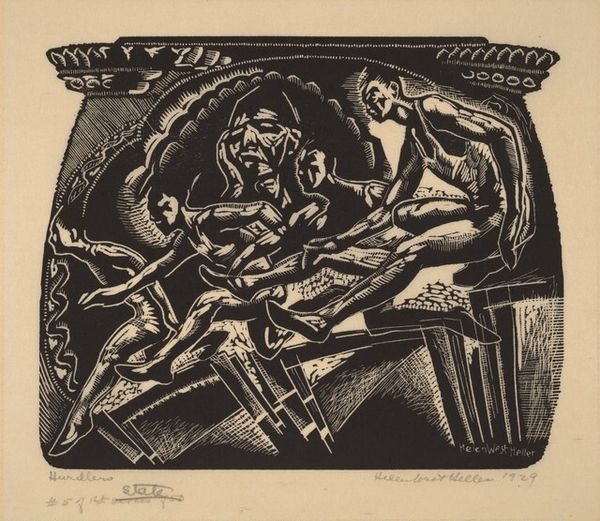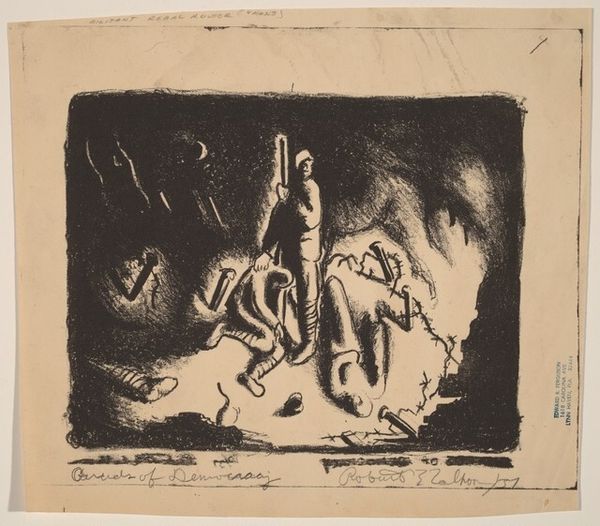
drawing, print, graphite
#
pencil drawn
#
drawing
#
narrative-art
# print
#
pencil sketch
#
charcoal drawing
#
pencil drawing
#
graphite
#
realism
#
monochrome
Dimensions: image: 187 x 243 mm sheet: 233 x 288 mm
Copyright: National Gallery of Art: CC0 1.0
Curator: Here, we see Francis Sumner Merritt's graphite and print piece from 1942, titled "God is My Co-Pilot." Editor: It's somber, isn’t it? Dark tones, dynamic diagonals. You immediately feel the pilot’s vulnerability but also this sort of hopeful upward trajectory at the same time. The rendering suggests someone feverishly capturing an idea. Curator: That makes sense, given the period. The narrative is intriguing. A pilot surrounded by what seems like broken or abstracted airplane parts is cradled by a large cross. Editor: It's such a raw portrayal of faith amidst wartime uncertainty, I think. Like grasping for something bigger than yourself when you're literally in the thick of it, thousands of feet above the ground. The composition definitely pulls you in. It feels unfinished but also resolved—maybe like faith itself. Curator: The medium definitely adds to that rawness. Graphite lends itself to quick sketching and a sense of immediacy. It reflects the anxiety of that period as this looks to be an output intended for wide reproduction to further cement religious rhetoric surrounding soldiers at war. The textual quality in mass produced printing would provide yet another layer to this piece through its distribution as ephemera. Editor: Absolutely, there's a feeling that what's on the paper is less precious, you know? Meant to be circulated, contemplated quickly, maybe offering momentary solace or a connection to something greater while in transit. The fact it’s rendered like this actually gives the whole message more power, in my opinion. Curator: Its widespread availability meant that "God is My Co-Pilot" reached a large audience grappling with the global conflict. Understanding its initial production as a simple graphite drawing helps ground its political message, making it more easily available in a time of immense cultural need. Editor: It really encapsulates the ethos of the time, doesn't it? Looking at it now gives me that very same immediate impression. A tangible object—a drawing, a print—offering this feeling of ephemeral safety, of something watching over you. Thanks for pointing out its origins; it changed how I see the message. Curator: Likewise; seeing it through your eyes reminds me how art touches beyond historical purpose to engage universal anxieties of security during crisis.
Comments
No comments
Be the first to comment and join the conversation on the ultimate creative platform.
